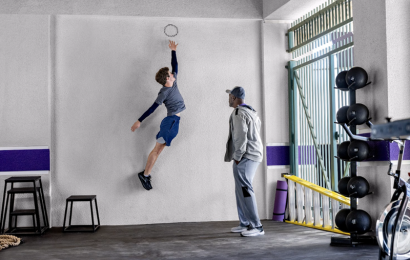Colliers: Romanian real estate investment market still has the resources to cross the 1 billion euro milestone in 2022
Given the high activity levels seen at the start of the year, with several deals already closed or signed in the first month, investment volumes in Romania could finally exceed 1 billion euro în 2022, according to the 2021 annual report released by Colliers. Just a few big-ticket office deals in quite advanced stages – which Colliers consultants predict with a fairly high degree of certainty will close in 2022 – can generate deals of over 600 million euro. În line with 2020, the Romanian investment market recorded transactions of almost 900 million euro last year, which represents over 8% of the total 11.7 billion euro investment volume recorded by the 6 largest countries in Eastern Europe.
In this context of current geopolitical and health challenges, the global economic outlook is extremely difficult to predict. The war in Ukraine and related sanctions, on top of pandemic and ESG drivers and disruptions, will impact property markets in terms of supply, demand and affordability. As a result, it is difficult to say how the Romanian economy and especially the real estate sector will be affected in the future. The inflationary backdrop and aggressive monetary policy tightening by the Federal Reserve could impact local activity, delaying some of the positive changes we expect.
Overall, 2021 has been a decent year for the Central and Eastern Europe (CEE) in terms of investment market activity, with the overall volume (based on preliminary numbers) up by about 6% compared to 2020, at 11.7 billion euro, but still some 20% behind 2019 levels, reveals Colliers in its latest “The CEE Investment Scene 2021/2022” report. Poland remained leader in the region, with investment volumes accounting 57% of the overall CEE6 invested capital last year. In terms of transactional activity, industrial and logistics spaces were dominant all over the region in 2021, with a share of 38% of the total volume of investments, followed by the office sector (35%) and away from the more challenged Retail and Hospitality sectors (17%).
Bucharest has some of the highest yields in the region for the industrial and logistic facilities (7.5%), compared to at most 4% in Prague, 4.1% in Warsaw or 5.7% in Budapest and Bratislava. In fact, industrial assets recorded in 2021 in Romania their best result since 2015, attracting transactions totalling around 260 million euro, which represents over 29% of total volume. This figure is also more than two and a half higher than the yearly average seen for deals involving I&L assets between 2010 and 2020.
Robert Miklo, Director of Investment Services at Colliers
“We continue to view the rather depressed volume of traded I&L assets in previous years as the result of a low offer on hand, which failed to underscore how deep the actual demand was. This means that 2021’s result was rather the simple consequence of more properties seeking a different owner, as buyers were likely to dig into their pockets. In fact, a Colliers survey conducted late in 2021 showed that industrial assets have become the most favored asset class in Europe. Meanwhile, offices remained the most active asset class, attracting deals worth around 44% of total, though very much below 2020’s share of 89%. The year was notable both in terms of the size of certain deals, as well as pricing, which marked a more significant downward move. Otherwise, after having underperformed CEE peers in past years, 2021 saw yields for prime offices in Romania performing a bit better than for some neighbors, though I&L assets saw a much steeper drop in the region”
2021 meant an improvement for retail as well, attracting deals of about 170 million euro, a sharp increase from 2020, though this is barely half the yearly volume seen between 2013 and 2018, when several large transactions involving commercial properties took place. Investors’ interest in retail products has been growing steadily over the last half year, focusing on various product categories such as retail parks or shopping arcades, shopping centers in secondary tertiary cities in need of repositioning or boxes leased to supermarkets or DIY.
In terms of investment dimensions, the office sector saw again the biggest transaction of 2021, with the purchase of Atenor’s Hermes Business Campus for around 150 million euro by Hungarian fund Adventum. The second biggest office deal was the sale of Skanska’s Campus 6.2 and 6.3 to Austrian fund S IMMO for 97 million euro, marking the latter’s first major purchase on the local market, previously primarily acting as a developer. This deal also set a provisional low for prime office yields, i.e. 6.75%, but Colliers consultants believe, based on advanced deals in the market, that yields continued to move south in the second part of the year.
Another deal worth mentioning is the sale of Atenor’s Dacia One office project to the owners of the Romanian DIY chain Dedeman for 50 million euro, a deal closed late in 2021 at a yield well below the prime level for offices, largely influenced by the longer-than average lease, though it ticked all the other marks: new building in a very good location, with a large surface leased by a single blue-chip tenant. Other major office deals included the sale of River Development’s The Light to Austrian group Uniqa, their first major local purchase in over a decade, for 56 million euro, as well as BCR’s former HQ heading to Immofinanz for 36 million euro.
The industrial and logistic sector also saw several major deals from the active developers, as well as two entries on the local scene. CTP Invest, the biggest developer on the local industrial market, added nearly 340,000 square meters of new warehouse spaces to their portfolio via 4 different purchases during 2021 for around 170 million euro in total. Around 80% of the sum came from two portfolios with various properties scattered throughout the country: Olympian Parks (owned by Greek developer Helios Phoenix) and a part of Zacaria’s portfolio. The third largest industrial deal in terms of size marked the first direct local purchase by Fortress REIT, NEPI Rockcastle’s biggest shareholder, which acquired Element Industrial’s ELI Park 1 near Bucharest for 30 million euro.
Following similar trends to the CEE region, office prime yields marked a steady descent in 2021 in Romania, decreasing from 7% to 6.5%. A similar situation can be recorded for prime I&L yields, where Colliers consultants note that yields are likely printed around 7.5% towards the end of the year, and for prime retail assets, they believe a prime retail shopping center would currently trade at around 6.75%, a bit higher than the trough reached before the pandemic.
Anca Merdescu, Associate Director Investment Services at Colliers.
“Meanwhile, financing options remain plentiful and liquidity remains abundant for real estate, with banks remaining the major source of debt. It is noteworthy that the current economic backdrop, with inflation (and higher interest rates) alongside forecasted economic growth, is typically seen as a boon for real estate in general. As such, despite the higher interest rates and, consequently, higher cost of risk in financial markets, this balances out a bit for real estate given how favored this asset class is at times like these. Otherwise, banks continue to display a preference towards income producing assets (especially prime assets) and will prefer industrial and office more than retail and hotels. The loan margin continues to hover around 250 to 350 basis points for good projects”
Going forward, the high inflation coupled with decent economic growth is quite favorable for the so-called “hard assets”, which include real estate, fully hedged against CPI spikes. And as Romanian assets have lagged behind other CEE peers this past economic cycle, we would likely see room for downward yield changes in the coming year, particularly for office and industrial assets.
Given the sharp decrease in I&L yields in the CEE, Colliers consultants expect a similar drop to take place in Romania sooner rather than later. While the positive price action for industrial assets will likely be more generalized, we expect a more nuanced dynamic for office assets – prime, income producing buildings will likely do better than those needing capital to be turned around, leading to a wider gap between the best offices and the rest. Another important trend to watch out for in 2022 is the growing pool of investors. Barring any major (unforeseen) economic meltdown, all of this suggest that we may be on the cusp of a record-setting year, with very positive developments for both market volume and yields, so 2022 could turn out to be not just the best year since 2007-2008, but the best year ever.
Francisc Peli, Managing Partner at the PeliPartners law firm, concludes
“Given the size and the sheer volume of transactions signed, closed, or pending in the past 12 months, it is safe to say that the interest of institutional investors for the Romanian assets remained unchanged and is expected to further materialize in the years to come. The main challenge is related to urban plans. The real estate legal industry for many years focused its due diligence efforts on issues related to title to land but has now started to develop more capabilities in assessing urbanism matters. Any future legislative changes will need to bring more clarity and coherence so that the two worlds – formal and functional – are not disconnected and in permanent struggle”






